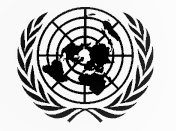
At its 79th session, the UN General Assembly requested the United Nations Office for Disarmament Affairs (UNODA) to conduct a study on obliterated markings and methods for marking recovery in the context of the International Tracing Instrument (ITI).
Obliterated markings refer to the deliberate erasing or alteration of identifying marks on small arms and light weapons (SALW), such as serial numbers or factory codes. It is a known problem that these markings are often removed by unauthorized users to hinder the tracing of illicit weapons. This practice poses a serious challenge to the effective implementation of the ITI, which requires that all markings be easily recognizable, readable, durable, and where technically possible recoverable. Without markings, tracing illicit SALW becomes difficult, undermining international efforts to combat the illicit arms trade.
Following recommendations made by UN Member States at the Fourth Conference of the Programme of Action (PoA) on SALW in June 2024, the study aims to gather experiences with marking obliteration, identify strategies for prevention and response, and highlight good practices in marking techniques and recovery methods.
UN Member States have been invited to complete a survey by 29 August 2025 to share their national practices. Survey responses may be submitted in Arabic, English, French, or Spanish. Please reach out to conventionalarms-unoda@un.org for more information on the survey.
Research for the study is being carried out by Conflict Armament Research, currently seeking voluntary contributions through interviews with:
· Firearm manufacturers with expertise in SALW marking technologies, and
· Forensic examiners experienced in recovering obliterated markings.
· Other organizations with expertise in marking.
If you or your organization would like to participate in a short interview, please contact conventionalarms-unoda@un.org or Dr. Henwood at henwood@conflictarm.com.
The findings of this study will be published ahead of the 2026 Biennial Meeting of States and will contribute to strengthening global marking practices and tracing.

